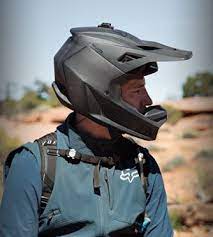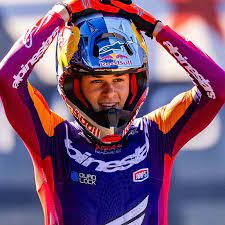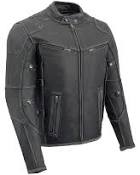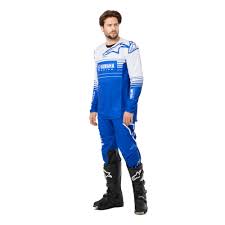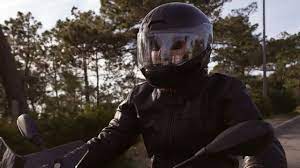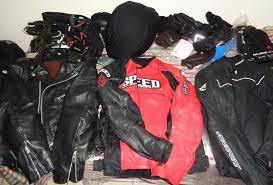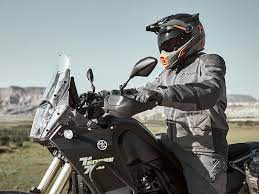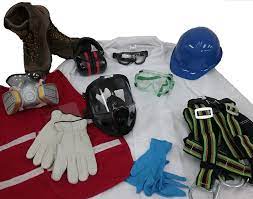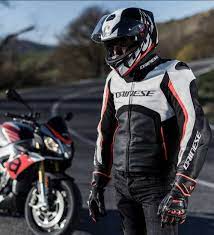Essential Motorcycle Gear: Ensuring Safety and Style on the Road

The Importance of Motorcycle Gear
Riding a motorcycle can be an exhilarating experience, but it’s important to remember that safety should always come first. One of the key elements in staying safe on the road is wearing the right motorcycle gear. Proper gear not only protects you in case of an accident but also enhances your overall riding experience.
Helmet
Arguably the most crucial piece of gear for any motorcyclist is a helmet. A good quality helmet can save your life in the event of a crash by protecting your head from impact. When choosing a helmet, make sure it fits properly and meets safety standards.
Jacket and Trousers
A durable motorcycle jacket and trousers provide protection against abrasions and injuries in case of a fall. Look for gear made from high-quality materials like leather or textile with built-in armour for added impact protection.
Gloves
Motorcycle gloves are essential for maintaining grip on the handlebars and protecting your hands in case of a fall. Choose gloves that offer both comfort and protection, with features like reinforced palms and knuckle armour.
Boots
Proper riding boots not only keep your feet comfortable during long rides but also provide crucial ankle support and protection. Look for boots with non-slip soles and sturdy construction to ensure safety on the road.
Visibility Gear
Enhancing your visibility to other road users is vital for staying safe while riding a motorcycle. Invest in reflective gear, such as vests or strips, to increase your visibility, especially when riding at night or in low-light conditions.
Remember, wearing the right motorcycle gear is not just about following regulations; it’s about protecting yourself and enjoying a safer, more enjoyable ride. Invest in quality gear that fits well and provides adequate protection to ensure you can continue enjoying the freedom of the open road for years to come.
Essential Motorcycle Gear: Five Top Tips for Safety and Comfort on the Road
- Always wear a helmet to protect your head in case of accidents.
- Invest in a good quality motorcycle jacket with padding for protection and comfort.
- Wear appropriate gloves to improve grip on the handlebars and protect your hands.
- Choose durable and non-slippery boots for better control of your motorcycle.
- Consider wearing high-visibility clothing, especially at night, to increase your visibility to other road users.
Always wear a helmet to protect your head in case of accidents.
It is essential to always wear a helmet when riding a motorcycle to safeguard your head in the event of accidents. A helmet provides crucial protection by absorbing impact forces and reducing the risk of head injuries, making it a vital piece of gear for every rider. Prioritising safety by wearing a helmet not only complies with legal requirements but also significantly enhances your chances of staying safe on the road. Remember, protecting your head with a quality helmet is a non-negotiable aspect of responsible motorcycling.
Invest in a good quality motorcycle jacket with padding for protection and comfort.
Investing in a high-quality motorcycle jacket with padding is essential for both protection and comfort while riding. A well-made jacket not only provides crucial impact protection in case of a fall but also ensures a comfortable and enjoyable riding experience. The padding in the jacket helps absorb shock and reduce the risk of injuries, while the quality materials and construction offer durability and long-lasting performance. By choosing a jacket that prioritizes both safety and comfort, riders can confidently navigate the roads knowing they are well-equipped for any situation that may arise.
Wear appropriate gloves to improve grip on the handlebars and protect your hands.
Wearing appropriate gloves while riding a motorcycle is essential for both enhancing grip on the handlebars and protecting your hands. The right pair of gloves not only provide better control and comfort during your ride but also act as a crucial barrier against potential injuries in case of a fall. By investing in quality motorcycle gloves with features like reinforced palms and knuckle armour, you can ensure a safer and more enjoyable riding experience while keeping your hands well-protected at all times.
Choose durable and non-slippery boots for better control of your motorcycle.
When selecting motorcycle gear, prioritise durable and non-slippery boots to enhance your control and stability while riding. Opting for high-quality boots with sturdy construction and reliable grip can significantly improve your handling of the motorcycle, especially in challenging road conditions. Investing in footwear that offers both durability and traction ensures a safer and more confident riding experience, allowing you to focus on the road ahead without compromising on control.
Consider wearing high-visibility clothing, especially at night, to increase your visibility to other road users.
When riding a motorcycle, it’s essential to prioritize safety, and one effective way to enhance visibility on the road is by wearing high-visibility clothing. This is particularly important when riding at night or in low-light conditions, as it helps other road users to easily spot you. By incorporating high-visibility gear into your riding attire, such as vests or strips, you significantly reduce the risk of accidents and ensure a safer journey for yourself and those around you.

